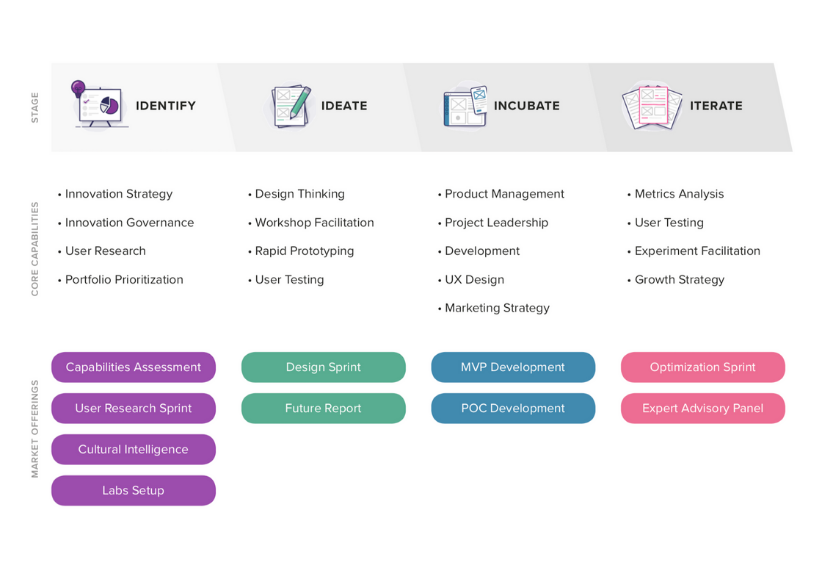Transformation
Nov 25, 2019
Understanding the Difference Between Minimum Viable Product, Proof of Concept, and Prototype

Many organizations interchangeably use the phrases “prototype,” “proof of concept,” and “minimum viable product.” For organizations renewing focus on innovation, this type of ambiguous language often leads to ambiguous goals—resulting in missed expectations and under-delivery. To avoid these pitfalls, we’ve found it helpful to use the following definitions for prototype, proof of concept, and minimum viable product from our Structured Innovation experience with clients:
Minimum Viable Product (MVP)
Stage: Incubation
Duration: 3-9 weeks (depending on scope)
Purpose: To measure, test, and prove the market fit of an evolving product line.
Answers the Question: “Where do we fit in the market?”
Useful For: Building early forecasts and/or models.
Measure of Success: Sign ups, active users, actual sales, or purchase orders.
Proof of Concept (PoC)
Stage: Incubation
Duration: 3-9 weeks (depending on scope)
Purpose: To research, develop, and prove an internal capability meriting strategic investment.
Answers the Question: “Can we actually do this?”
Useful For: Identifying operational difficulties and holistic costs.
Measure of Success: Production-grade demo that secures funding from investors or board approval.
Prototype
Stage: Ideation (a component of a design sprint)
Duration: Less than one day (as part of a week-long design sprint).
Purpose: To garner real user feedback to answer targeted questions about a potential solution.
Answers the Question: “What should we focus on?”
Useful For: Validating strengths and identifying pain points of potential solutions.
Measure of Success: User tests, analytics, and/or survey data point to areas of ambiguity on which to focus MVPs or PoCs.
See how these definitions fit into Credera’s overall innovation process and when is best to use each deliverable in the graphic below.

Hopefully these definitions can provide a foundation to move forward with innovation at your organization. We draw on our real-world experience to bring deep capabilities to each stage of your innovation process—including identifying needs, incubating solutions, and iterating to drive continued improvements. Reach out to a Credera innovation expert at findoutmore@credera.com to learn more about how Credera can help you with your innovation goals.
Contact Us
Ready to achieve your vision? We're here to help.
We'd love to start a conversation. Fill out the form and we'll connect you with the right person.
Searching for a new career?
View job openings